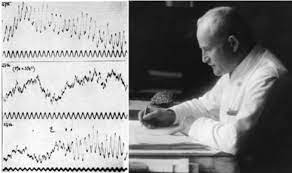Neurofeedback is also known as EEG Biofeedback. While many people have not heard of it, it's actually be around for some time.
In the 1870s Richard Caton, an English physician, was the first to discover that the brain generated electricity.
In 1924, Hans Berger, German psychiatrist, placed two electrodes on a patients scalp and detected a small current by using a ballistic galvanometer.


